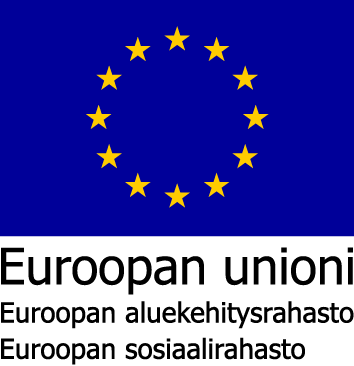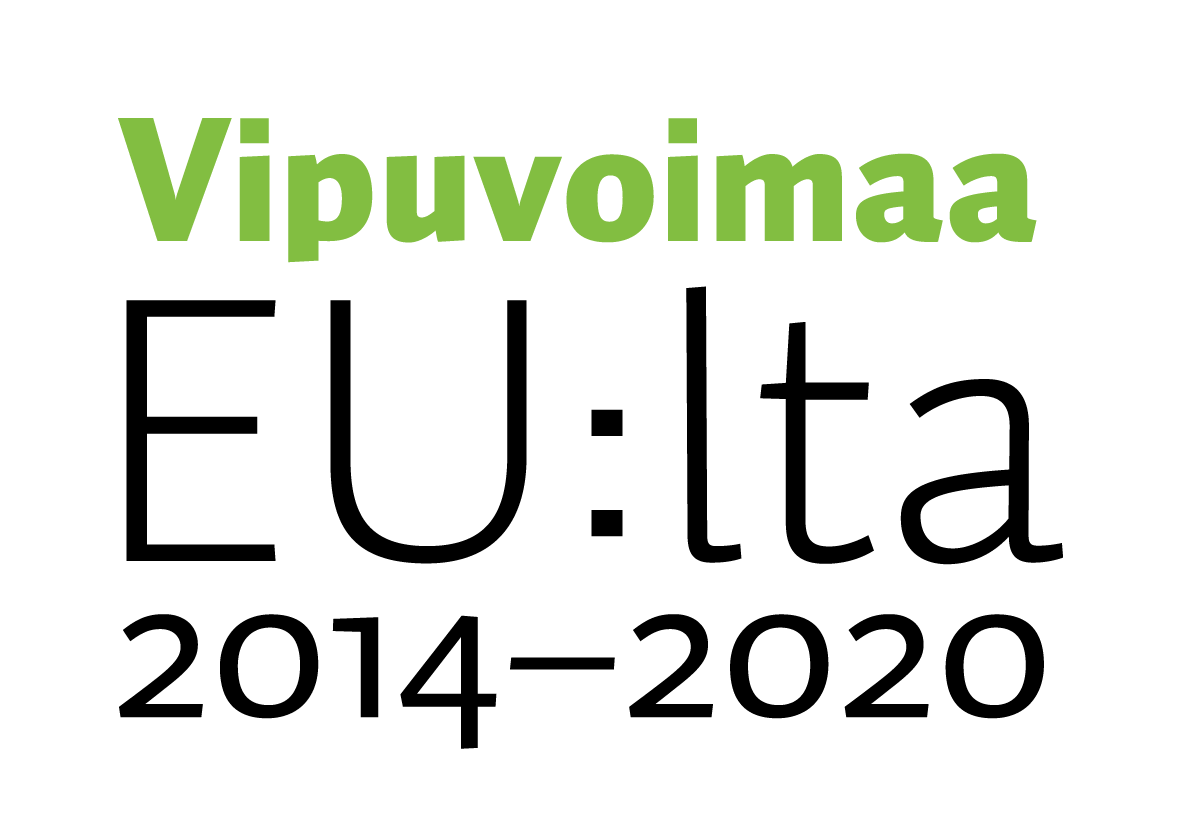

 |
 |
Hankekoodi: A73945
Hankkeen nimi: Virtuaalimetsä 2.0
Toimintalinja: 2. Uusimman tiedon ja osaamisen tuottaminen ja hyödyntäminen
Erityistavoite: 5.1. Yritysten innovaatiotoiminnan vahvistaminen
Suunnitelman mukainen toteutusaika: Alkaa 1.6.2018 ja päättyy 31.12.2020
Toiminnan tila: Toiminta päättynyt
Vastuuviranomainen: Pohjois-Pohjanmaan elinkeino-, liikenne- ja ympäristökeskus
Hakijan virallinen nimi: Lapin ammattikorkeakoulu Oy
Organisaatiotyyppi: Ammattikorkeakoulu
Y-tunnus: 2528792-5
Jakeluosoite: Jokiväylä 11
Puhelinnumero: 0207986000
Postinumero: 96300
Postitoimipaikka: Rovaniemi
WWW-osoite: http://www.lapinamk.fi
Hankkeen yhteyshenkilön nimi: Anne-Mari Väisänen
Yhteyshenkilön asema hakijaorganisaatiossa: Projektipäällikkö
Yhteyshenkilön sähköpostisoite: anne-mari.vaisanen(at)lapinamk.fi
Yhteyshenkilön puhelinnumero: 040-775 1893
Hakijoiden lukumäärä tai tuen siirto -menettely:
Metsäbiotalouden raaka-ainesaannin varmistaminen, entistä monitavoitteisempi metsävarojen suunnittelu ja eri osapuolten intressien yhteensovittaminen vaativat uudenlaisia digitaalisia työkaluja luonnonvarojen ja maankäytön suunnitteluun. Tarpeen on kehittää digitaalisia tuotteita ja palveluita, joilla pystytään aktivoimaan metsänomistajia ja sitä kautta edistämään metsäelinkeinon toimintaedellytyksiä ja elinkeinojen yhteensovittamista Lapissa.
Virtuaalimetsä on uudenlainen innovaatioalusta, joka mahdollistaa metsävaratiedon visualisoinnin ja yhdistää metsätietojärjestelmän ja paikkatietojärjestelmän. Virtuaalimetsä toimii nykyisellään Lapin ammattikorkeakoulun metsätalouden koulutusohjelman oppimisympäristönä, mutta sovelluksen jatkokehittämisen kautta sen käyttöä voidaan laajentaa osallistavaan maankäytön suunnitteluun ja metsänomistajien neuvontaan.
Hankkeen tavoitteena on kehittää Virtuaalimetsää edelleen sekä mahdollistaa Virtuaalimetsä-sovelluksen ottaminen laajemmin metsäelinkeinon käyttöön palvelemaan metsätalouden suunnittelua ja puunhankintaa alueellisella ja kansallisella tasolla. Kohdennettuna tavoitteena on
•edistää Virtuaalimetsän nykyistä automatisaatiota, jotta metsävaratiedon siirto visualisointiin tapahtuu entistä automaattisemmin ja nopeammin
•testata ja edistää kaukokartoitusaineistojen käyttöä metsävaratiedon visualisoinnissa
•mahdollistaa Virtuaalimetsän käyttö entistä useammalla kasvupaikkavyöhykkeellä
•kehittää visualisoinnin tasoa, muun muassa puiden tarkempaa sijoittelua visualisoinnissa
•laajentaa Virtuaalimetsän käyttökohteita metsäelinkeinossa.
Toimenpiteinä ovat 1) Virtuaalimetsän tekninen jatkokehitys, 2) Metsävaratiedon visualisointi valtakunnallisesti, 3) Luonnonvaratiedon käytön laajentaminen visualisoinnissa, 4)Metsävaratiedon visualisoinnin käyttökohteet ja 5) Hallinto ja viestintä.
Hankkeen tuloksena on
•edistetty Virtuaalimetsän automatisaatiota (tiedonsiirrot metsävaratiedosta visualisointiin, eri kasvupaikkojen ja metsäalueiden visualisoinnit)
•toteutettu kasvupaikkojen mallinnukset myös Lapin ulkopuolelta
•edistetty puuston entistä tarkempaa sijoittelua virtuaalisessa metsäympäristössä
•edistetty kaukokartoitus- ja muiden avointen aineistojen käyttöä metsävaratiedon visualisoinnissa
•tarkasteltu laaja-alaisesti visualisoidun metsävaratiedon käyttökohteita ja sen tuomaa lisäarvoa metsäelinkeinon päätöksenteossa
•testattu Virtuaalimetsää metsäpalveluyrityksissä ja julkisen sektorin tekemässä osallistavassa maankäytön suunnittelussa
•keskusteltu visualisoinnin liitäntämahdollisuuksista Metsään.fi-palvelun ylläpitäjän (Metsäkeskus) kanssa
•testattu Virtuaalimetsää valtion metsien käyttöön, osallistavaan suunnitteluun ja elinkeinojen yhteensovittamiseen liittyen (Metsähallitus).
Hankkeen toteutuksessa on mukana korkeatasoista metsäalan ja metsävaratiedon osaamista, sillä tarve metsävaratiedon visualisoinnille on laajasti tunnistettu. Pitkällä aikavälillä hankkeella on vaikutusta Lapin metsätalouselinkeinon raaka-aineen saannin varmistamiseen metsänomistajien neuvonnan ja aktivoinnin kautta.
Lisäksi Virtuaalimetsä tulee tarjoamaan täysin uudenlaisen työkalun osallistavaan suunnitteluun luonnonvarojen käytössä. Sovelluksen käyttömahdollisuuksien kartoittamisen kautta voidaan löytää Virtuaalimetsälle uusia käyttökohteita muistakin elinkeinoista (esim. matkailu), jotka ovat tärkeitä Lapin maakunnalle. Lisäarvoa on löydettävissä myös elinkeinojen yhteensovittamisessa alueilla, joille kohdistuu useita käyttötarpeita.
Yritykset, metsäorganisaatiot
Metsänomistajat, metsäteollisuus, muut elinkeinot (matkailu), virkistyskäyttäjät, oppilaitokset
Myönnetty EU- ja valtion rahoitus: 347 596
Toteutunut EU- ja valtion rahoitus: 327 692
Suunniteltu julkinen rahoitus yhteensä: 477 133
Toteutunut julkinen rahoitus yhteensä: 449 809
Maakunnat: Lappi, Pohjois-Karjala
Seutukunnat: Rovaniemen, Joensuun
Kunnat: Joensuu, Rovaniemi
Jakeluosoite:
Postinumero:
Postitoimipaikka:
Suunniteltu: 0, joihin työllistyvät naiset 0
Toteutunut seurantatietojen mukaan: 0.00, joihin työllistyvät naiset 0.00
Suunniteltu: 0, joista naisten perustamia 0
Toteutunut seurantatietojen mukaan: 0.00, joista naisten perustamia 0.00
| Välitön | Välillinen | |
| Ekologinen kestävyys | ||
| Luonnonvarojen käytön kestävyys | 0 | 5 |
| Lähtökohta kaikessa metsätaloudessa, myös tässä hankkeessa | ||
| Ilmastonmuutoksen aiheuttamien riskien vähentäminen | 0 | 5 |
| Kestävällä metsätaloudella ja tehokkaalla maankäytön suunnittelulla voidaan tehokkaasti ehkäistä ilmastonmuutoksen aiheuttamia riskejä. | ||
| Kasvillisuus, eliöt ja luonnon monimuotoisuus | 0 | 5 |
| Visualisoinnissa huomioidaan myös kasvillisuus ja luonnon monimuotoisuus. Visualisointi mahdollistaa entistä paremman maankäytön suunnittelun ja tärkeiden elinympäristöjen huomioinnin. | ||
| Pinta- ja pohjavedet, maaperä sekä ilma (ja kasvihuonekaasujen väheneminen) | 0 | 3 |
| Tukee kestävää metsätaloutta ja vähähiilistä yhteiskuntaa. | ||
| Natura 2000 -ohjelman kohteet | 0 | 1 |
| Ei suoraa vaikutusta, mutta myös Natura-kohteiden suunnitteluun sovellus soveltuu myöhemmässä vaiheessa. | ||
| Taloudellinen kestävyys | ||
| Materiaalit ja jätteet | 0 | 4 |
| Tukee materiaalitehokkuutta luonnovarojen käytön tehokkaamman ja tarkemman suunnittelun kautta. Mahdollistaa metsänhoitotoimenpiteiden tarkemman suunnittelun ja vertailun. | ||
| Uusiutuvien energialähteiden käyttö | 0 | 10 |
| Tukee uusiutuvien energialähteiden käyttöä | ||
| Paikallisen elinkeinorakenteen kestävä kehittäminen | 0 | 8 |
| Kehittää metsätalouselinkeinoa ja myös matkailun ja muiden Lapille tärkeiden elinkeinojen yhteensovittamista. | ||
| Aineettomien tuotteiden ja palvelujen kehittäminen | 0 | 6 |
| Visualisointi on aineeton tuote ja palvelu metsänomistajien neuvontaa ja osallistavaan maankäytön suunnitteluun. | ||
| Liikkuminen ja logistiikka | 0 | 5 |
| Tukee paikallisen raaka-ainetuotannon edistämistä. Hankkeen toteutuksessa hyödynnetään etäyhteyksiä mahdollisuuksien mukaan. | ||
| Sosiaalinen ja kulttuurinen kestävyys sekä yhdenvertaisuus | ||
| Hyvinvoinnin edistäminen | 0 | 2 |
| Edistää Lapille tärkeiden elinkeinojen toimintaa ja sitä kautta varmistamaan työllisyyttä ja jopa lisäämään sitä, mikäli uudet investoinnit toteutuvat. | ||
| Tasa-arvon edistäminen | 0 | 0 |
| Otetaan huomioon hankkeen toteutuksessa | ||
| Yhteiskunnallinen ja kulttuurinen yhdenvertaisuus | 0 | 3 |
| Visualisoinnin avulla voidaan sovitta yhteen eri yhteiskuntaryhmien intressejä, jotka kohdistuvat samoille alueille. | ||
| Kulttuuriympäristö | 0 | 4 |
| Kulttuuriympäristöjen visualisointi mahdollistuu, kun sovellusta kehitetään edelleen. Kulttuuriympäristöjen erityispiirteet ja tarpeet muihin elinkeinoihin nähden pystytään entistä paremmin huomioimaan visualisoinnin avulla. | ||
| Ympäristöosaaminen | 0 | 3 |
| Tukee suoraan ympäristöosaamista, koska edistää metsävarojen kestävää käyttöä | ||
Virtuaalimetsä 2.0-hankkeen keskeisenä tavoitteena oli metsävarojen visualisoinnin jatkokehittäminen ja visualisoinnin käyttökohteiden löytäminen ja lisääminen metsätalouselinkeinossa. Hankkeessa kehitettiin Virtuaalimetsä-sovellus sekä visualisointia tarkentavia aineistoja, joiden avulla pystyttiin tarkentamaan puuston sijoittumista kuviolla sekä havaitsemaan metsikkökuvioiden sisäisiä puuttomia alueita ja tuottamaan realistinen metsän visualisointi kaikkialla Suomessa. Metsävarojen visualisointiin kehitettyä Virtuaalimetsä-sovellusta esiteltiin kohderyhmissä hankkeen aikana laajamittaisesti. Esittelyiden ja demonstraatioiden aikana kerättiin palautetta tukemaan hankkeen aikana tehtävää aineistojen ja sovelluksen kehitystä. Sovellusta testattiin myös metsätalousinsinööriopetuksessa ja metsävarojen visualisoinnin soveltuvuudesta metsätalousinsinööriopetukseen kerättiin palautetta ja havaintoja. Hankkeen aikana järjestettiin webinaareja, joissa kerrottiin hankkeessa tehdystä kehitystyöstä ja esiteltiin kehitettyä sovellusta. Lisäksi hankkeen tuloksia esiteltiin useissa metsäalan tapahtumissa ja erikseen sovituissa tapaamisissa metsäalan organisaatioille.
Hankkeen tuloksena tuotettiin tietoa visualisoinnin soveltuvuudesta metsätalouselinkeinon operatiiviseen toimintaan sekä nykyistä metsävaratietoa tarkentavien aineistojen kehittämiseen ja julkaistiin kaikkien käytettävissä oleva metsävarojen visualisoinnin mahdollistava sovellus. Hankkeen aikana kerätyn palautteen perusteella metsänomistajat, metsäpalveluyrittäjät, kaupungit sekä myös metsäalan suuryritykset havaitsivat käyttökohteita visualisoinnille esimerkiksi metsäsuunnitelman esittelyssä, hakkuusuunnitelmien visualisoimisessa, palveluiden markkinoinnissa, puukauppojen tekemisessä sekä osallistavaan suunnitteluun liittyvissä käyttökohteissa. Hankkeen aikana ilmenneestä korona-virus –tilanteesta johtuen monet esittelyistä tehtiin etäyhteyksien välityksellä. Metsävarojen visualisoinnin havaittiin olevan hyödyllinen sekä lähi- että etäneuvonnan tilanteissa. Metsävarojen visualisoinnin havaittiin soveltuvan hyvin myös esimerkiksi kaupunkimetsäsuunnitteluun liittyvään osallistamiseen. Hankkeessa kehitettyjen metsävarojen visualisointia tarkentavien aineistojen avulla pystyttiin tuottamaan tarkempi kuvaus metsästä verrattuna pelkän metsikkökuviotiedon käyttämiseen. Esimerkiksi aukkojen olemassaolo ja näkyminen kuviolla vaikuttaa metsän ulkonäköön ja tunnistettavuuteen.